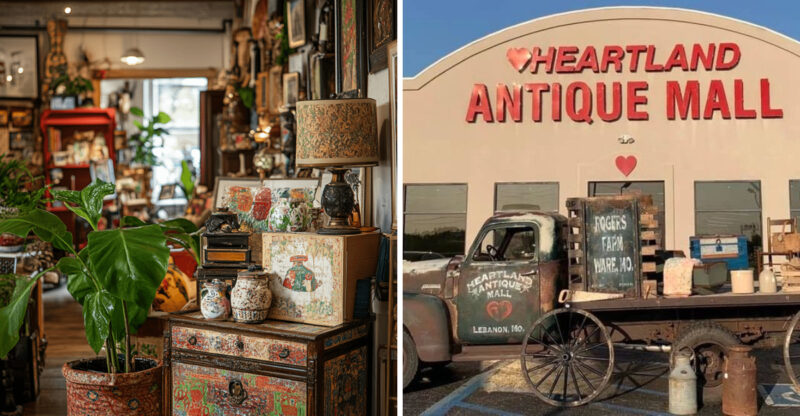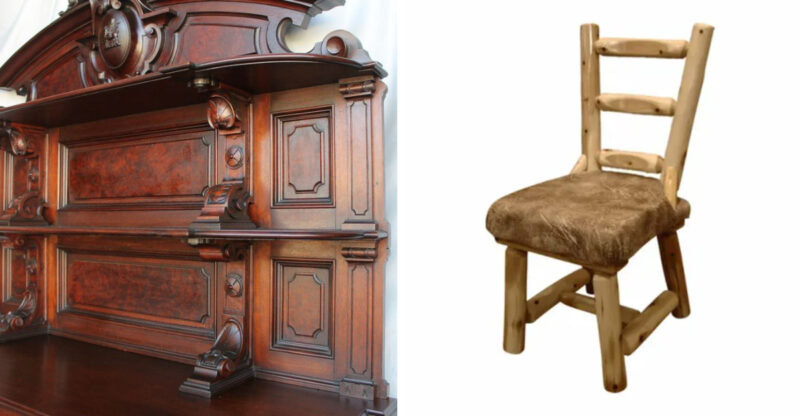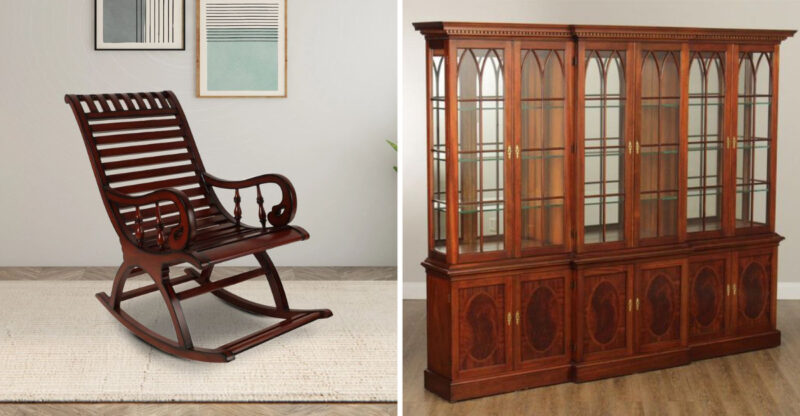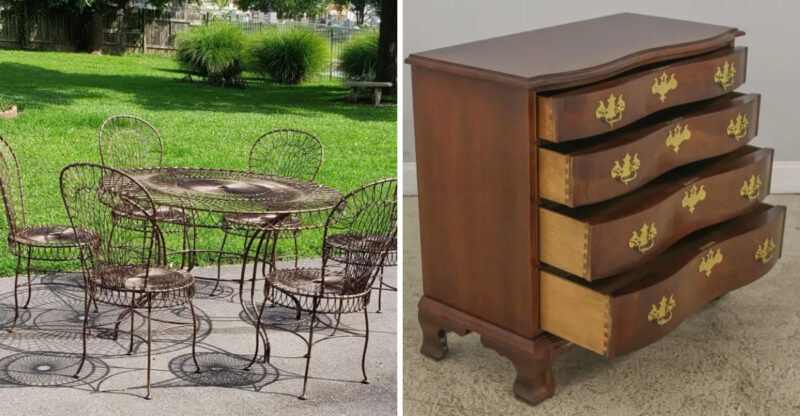10 Ways You Might Differentiate Antique Furniture From Vintage Pieces
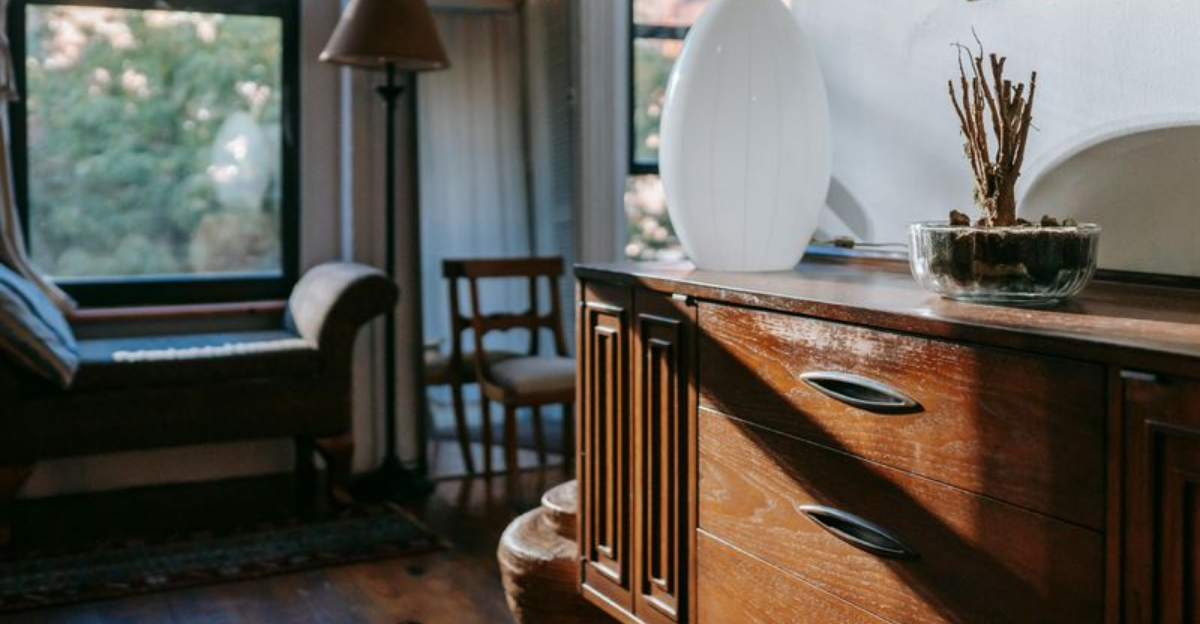
Ever wondered if that chair from grandma’s attic is a genuine antique or simply a vintage piece? The distinction matters for both value and historical significance.
Antiques are generally over 100 years old, while vintage items usually range from 20 to 99 years old. Knowing the difference can help you make smarter buying decisions and better appreciate the craftsmanship of each era.
Look for clues in construction methods, materials, hardware, and wear patterns these subtle details often reveal a piece’s true age. Keep in mind that availability, condition, and provenance can all affect both value and desirability.
1. Age Defines the Category
The primary distinction between antique and vintage furniture boils down to age. Authentic antiques must be at least 100 years old, while vintage pieces typically fall between 20 and 99 years of age. This isn’t just an arbitrary classification it affects value significantly.
For collectors and appraisers, crossing that century threshold often means a dramatic increase in worth. I’ve seen pieces double in value simply by aging past their 100th birthday!
When examining a potential purchase, try to establish a rough date of creation through style, construction methods, and materials. Remember that many sellers loosely use these terms, so don’t take their word without verification.
2. Construction Techniques Tell Stories
Hand-cut dovetail joints often reveal an antique’s age and authenticity. These joints, where pieces fit together like puzzle pieces, weren’t perfectly uniform in antiques because craftsmen cut them by hand, showing slight irregularities that tell a story of craftsmanship.
Machine-cut joints, meanwhile, display perfect uniformity and typically appear in vintage pieces from the 20th century. I always run my fingers along these connections to feel the subtle differences.
Other construction clues include mortise-and-tenon joints, hand-carved details, and irregular saw marks underneath drawers or on the backs of pieces. These hidden areas often preserve the most honest evidence of how and when furniture was made.
3. Hardware Offers Valuable Clues
Original hardware on furniture pieces acts like a time capsule for dating purposes. Square-head nails and individually crafted screws typically indicate pre-1880s construction, signaling a true antique. When I find these primitive fasteners, I get genuinely excited!
Vintage pieces usually feature mass-produced Phillips-head screws and machine-made hardware with consistent dimensions. Examine hinges, drawer pulls, and locks carefully replacements are common but usually detectable.
If you spot modern hardware on an allegedly antique piece, check for filled holes or evidence of replacement. Sometimes flipping a drawer upside down reveals original nail holes or hardware impressions that tell the true story of a piece’s age.
4. Wood Patina Develops Over Centuries
Authentic patina can’t be faked it’s the rich, deep finish that only develops through decades of gentle use, oxidation, and exposure to the environment. True antiques display a depth and complexity in their finish that vintage pieces haven’t had time to develop.
This natural aging creates an uneven coloration and subtle sheen that feels almost alive. Look at unexposed areas like drawer bottoms or back panels to see the contrast between protected and exposed surfaces.
Vintage pieces might have attractive finishes, but they lack the century-plus aging that creates true patina. Beware of artificial patinas created through chemical treatments or stains these typically have an unnaturally uniform appearance and lack the subtle variations found in genuinely aged surfaces.
5. Machine Marks vs. Hand Craftsmanship
Hand tools leave distinctive marks that differ dramatically from machine-produced furniture. On antiques, look for subtle irregularities in carved elements, slightly uneven surfaces, and saw marks that aren’t perfectly parallel these all indicate hand craftsmanship.
Vintage pieces typically show evidence of circular saw marks, router patterns, or uniform sanding. These machine-made indicators became increasingly common after the Industrial Revolution transformed furniture production.
Check hidden areas like the underside of tables or inside cabinets where craftsmen wouldn’t have bothered to hide their work methods. I’ve discovered fascinating tool marks under drawer bottoms that instantly revealed a piece’s age and authenticity. These small details tell the true story of how a piece came into being.
6. Wear Patterns Reveal True Age
Honest wear doesn’t lie about a furniture piece’s age. Authentic antiques show wear in predictable places worn edges where hands naturally rest, uneven leg wear, or subtle impressions from decades of use tell a genuine story of age.
Suspicious wear patterns often expose reproductions. I’ve spotted fake distressing that appears in illogical places where normal use wouldn’t cause wear. This artificial aging typically looks too uniform or deliberate.
Vintage pieces show less pronounced wear than antiques simply because they haven’t existed as long. When examining potential purchases, run your fingers along edges and corners to feel the subtle smoothing that only comes from generations of genuine use. This tactile evidence provides some of the most reliable clues about a piece’s true age.
7. Style Periods Help Date Pieces
Recognizing distinctive furniture styles can instantly narrow down a piece’s age. Victorian furniture (1837-1901) with its ornate carvings and curved lines often qualifies as antique, while Art Deco (1920s-30s) and Mid-Century Modern (1940s-70s) pieces fall firmly in the vintage category.
Style characteristics evolved as societal tastes changed. Heavy, dark Renaissance Revival pieces give way to lighter Eastlake designs, then to Arts and Crafts simplicity at the turn of the century.
Style reproduction complicates identification Victorian furniture was being reproduced as early as the 1920s, creating vintage reproductions of antique styles! I’ve learned to look beyond just the style to construction techniques and materials that reveal a piece’s true period. The combination of style and construction provides the most accurate dating.
8. Secondary Woods Offer Authentication
Hidden secondary woods used in less visible areas provide fascinating authentication clues. Antique furniture makers typically used different woods for structural versus visible parts expensive mahogany or walnut for show surfaces with pine, poplar, or oak hidden underneath.
Regional differences in secondary wood choices can help identify where a piece originated. American antiques often used native woods like tulip poplar or white pine, while European pieces might contain beech or deal pine.
Vintage furniture, especially mass-produced pieces, tends to use more consistent materials throughout. Examining drawer sides, backs, and interior framing reveals these secondary woods. I’ve authenticated several pieces by spotting the distinctive grain pattern of old-growth secondary woods that simply weren’t available to furniture makers after certain periods.
9. Regional Characteristics Give Context
Furniture styles developed distinctive regional variations that help place pieces in both time and geography. Pennsylvania Dutch furniture features distinctive painted decorations, while Southern antiques often used native yellow pine and simpler constructions than their Northern counterparts.
European antiques display their own regional hallmarks English Georgian pieces differ markedly from French Louis XV despite being contemporaries. These regional characteristics evolved differently into the vintage era.
During the vintage period, mass production began homogenizing furniture styles across regions, though some strong regional design schools emerged. Danish Modern, for instance, has a distinctly different character from American Mid-Century pieces. Understanding these geographical influences helps tremendously when trying to authenticate and date furniture accurately.
10. Maker’s Marks and Labels Provide Provenance
Manufacturer stamps, paper labels, and branded marks offer concrete evidence of a piece’s origin and age. Many high-quality furniture makers proudly marked their work, though these identifiers evolved over time.
Antique pieces might feature hand-signed marks, burned-in stamps, or metal plaques with maker information. Vintage manufacturers typically used paper labels, ink stamps, or metal tags with more detailed company information.
Famous makers like Stickley, Chippendale, or Heywood-Wakefield significantly impact value in both categories. I always check thoroughly for these identifiers under drawers, on back panels, and inside cabinets. Even partial labels can provide crucial dating information through company names, addresses, or patent numbers that can be researched to establish manufacturing dates.

